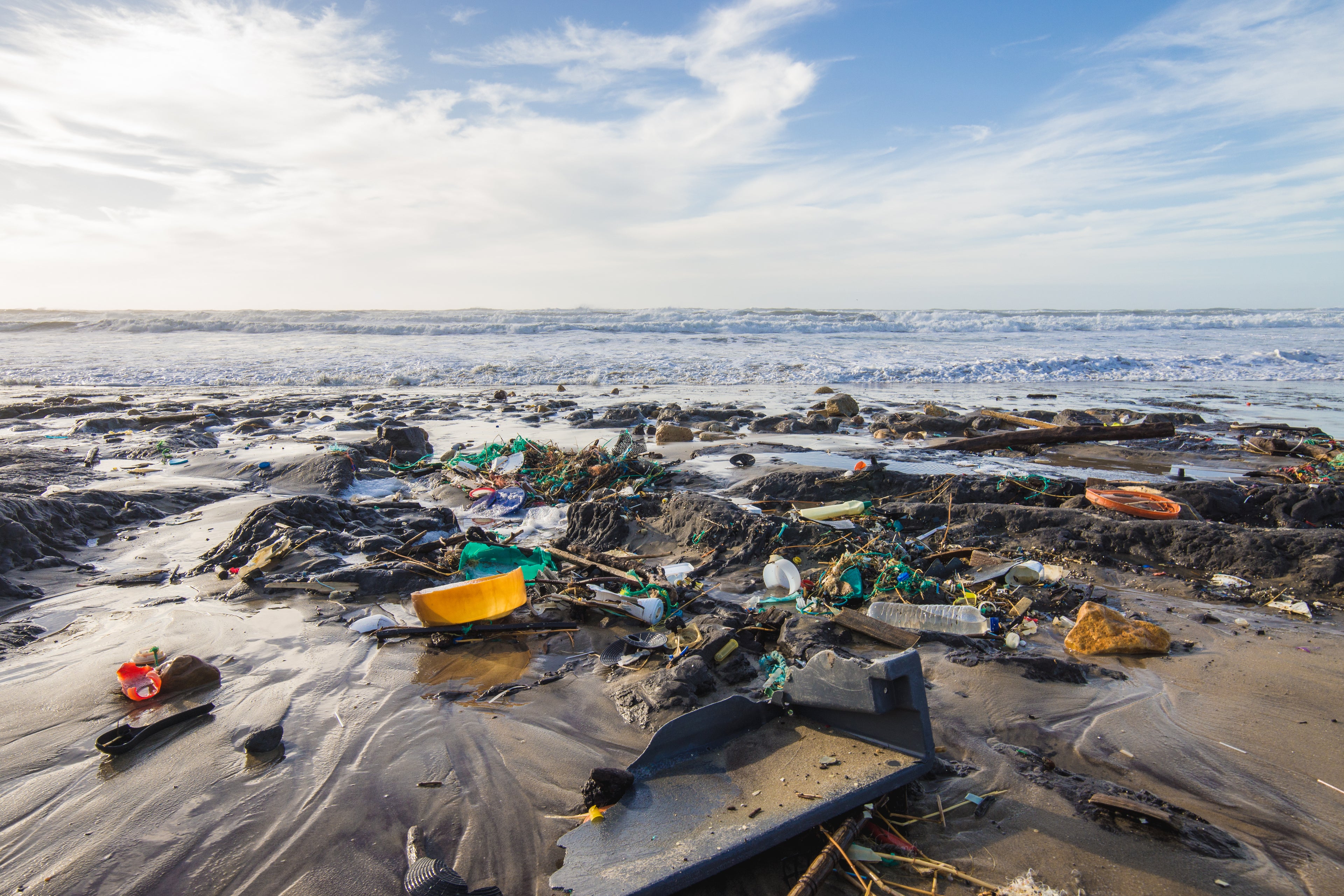By the time recycled ocean plastic makes it to the manufacturing facilities where it will be given new life and transformed into various products, it’s tough to tell where it came from. But all recycled plastics have an origin story.
And no story is complete without a setting, which is why it’s so important to understand all the places plastics begin their unfortunate journeys to the ocean. Tracing recycled plastic back to the source generally leads to six types of locations.

Ocean-bound

Communities located within 50 kilometers of a shoreline may not realize just how much of their waste ends up in the ocean. But when it comes to plastic, 50 kilometers might as well be next door.
Whether it’s the wind, animals, seasonal flooding and storm surges, tributary waterways, or simply careless waste management, much of the plastic waste generated in these communities eventually ends up in the water.
Plastic doesn’t degrade (at least not in our lifetimes), instead, it breaks down into smaller and smaller pieces. When that plastic waste is mismanaged, those tiny bits of plastic can eventually make their way to the ocean.
Plastic waste generation continues to increase around the world, yet many countries mishandle the vast majority of it. The U.S. produces far more plastic waste per capita than most other countries, but nations such as China, Indonesia, the Philippines, and Vietnam end up being bigger polluters despite their lower overall consumption due to their poor management of plastic waste.
Waterway

Streams, rivers, and other waterways are a primary transportation method for plastic waste to eventually arrive in the ocean. They flow through communities, beside highways, and under bridges, picking up bits and pieces of the stuff as the water continues its inevitable voyage to the sea.
Drink bottles, wrappers, plastic bags… these items all end up in the waterways crisscrossing our lives. As plastics move downstream, some get tangled on branches and rocks while others continue making their way to larger and larger bodies of water.
Microfibres also end up entering the aquatic ecosystem via waterways when they’ve washed off clothing and other materials. Once these tiny pieces of plastic go down the drain or are rinsed away via the rain, they eventually find a route to these rivers and streams.
Coastal

Beaches, boardwalks, ports, and promenades all play a role in generating ocean plastic. Humans congregate in these areas for their beauty, cooler temperatures, water sports, and access to the ocean for commercial and pleasure marine activities.
But where there are humans, there will be trash. Plastic debris has a short distance between human hands and the crashing waves in these areas.
Additionally, plastic waste from other places washes up on the coasts around the world all the time. It’s not at all surprising to find plastic debris on a beach thousands of miles from its point of origin.
And, of course, beaches and coastlines are where ocean plastic problems are the most visible. Sandy beaches littered with plastic waste of all shapes and sizes inspire beach cleanups and calls to reduce littering, but without staunching the flow of plastics earlier on, these are just window dressings for the larger problem.
Nearshore

Once you swim or sail past the coastline, ocean plastics continue to plague the environment. Some waste floats upon the waves as it’s carried about after being blown into the waters or discarded from ships.
Beneath the surface, plastic waste is also mucking things up. Large pieces are causing havoc for subterranean seascapes, coating parts of the seafloor and harming the ability for undersea vegetation to flourish by interfering with photosynthesis.
Smaller plastic debris creates even more insidious problems. Sealife is increasingly consuming plastic waste. Some pieces are large enough to choke or suffocate animals, including sea birds, turtles, and whales.
Other plastic microfibers are so small they’re unwittingly being eaten by fish and other creatures. Not only is this harmful to the sealife itself, but when humans eat those animals, the plastic then ends up inside our own bodies.
High Seas

Floating garbage patches are one of the most notorious examples of ocean plastic pollution. Originating from sources around the world, ocean currents collect this debris. Over time, these patches aggregate larger and larger amounts of it. Some cover an area larger than Texas.
These patches consist of plastics that both sit on the surface and extending several meters down. The microplastics formed by the gradual breakdown of plastics into smaller and smaller pieces turn the water around these garbage patches cloudy.
The plastics comprising these garbage patches include everything from household goods to items that have gone overboard from ships, not to mention the ever-present scourge of plastic fishing nets.
But garbage patches and floating debris aren’t the only problematic plastics in the high seas. Not everything floats, which leads to plastic waste being discovered in some of the deepest undersea trenches on the planet.
Chipping away at a pervasive problem
As you can see, plastic finds its ways to our oceans in a variety of ways. But regardless of the route it takes, the only solution is extracting plastic from our planet’s waters and trying to find a better use for it. Recycling ocean plastic won’t fix plastic pollution, but every piece that finds a new purpose leaves the environment a little cleaner while reducing the need to create even more virgin plastic to begin with.
Discover how your company can do its part to reduce its environmental impact and leverage recycled ocean plastic for a more sustainable supply chain. Check out the Oceanworks Marketplace and see what material is available from local suppliers today.
